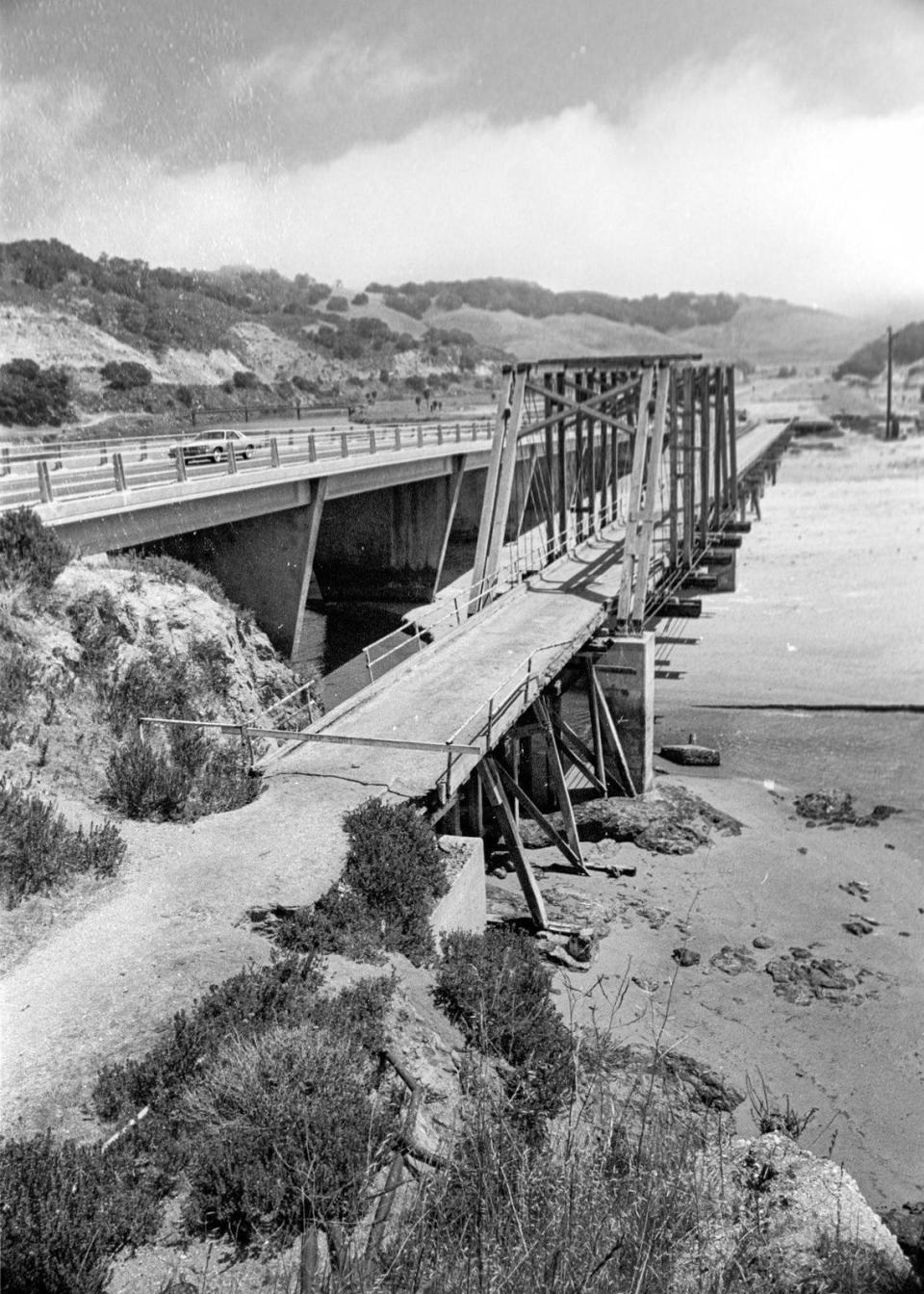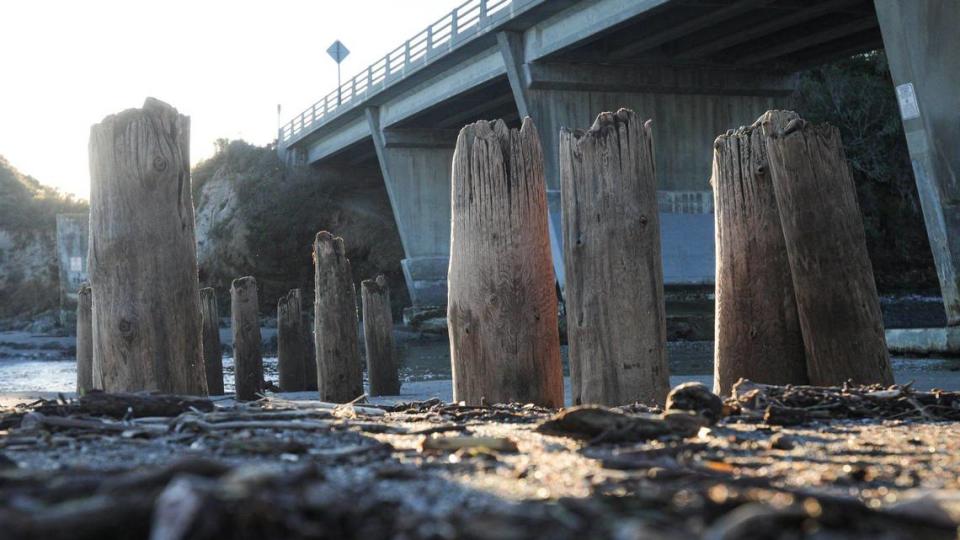SLO County railroad trestle stood for nearly a century — until the rains came
Editor’s Note: This column was first published by The Tribune on Feb. 16, 2013, but fell off the website due to a change in web platforms. A lightly edited version is presented here.
You may have wondered about the mysterious plinth-like footings looming beside San Luis Obispo Creek in Avila Beach and the pilings that are exposed after strong storms.
They are among the last remaining monuments to the dawn of modern Central Coast transportation, the Pacific Coast Railway.
The concrete plinth was an underpinning to Bridge No. 5.
The narrow-gauge rails were in use for 66 years, at the peak of operations connecting Port San Luis to San Luis Obispo and terminating in Los Olivos.
The venture originated with pier owner John Harford. His wharf was the best in the region, protected from heavy weather.

It was also one of the most difficult to access by land.
He solved his transportation problems with a gravity-and horse-powered railroad, cars coasting down from a high point between the two locations. The mile-and-half-long, six-horse power railroad included a tunnel and five bridges.
Operations began in September 1873. Those were the days when a heavy-equipment crew consisted largely of a man, a mule and wheelbarrow.
Soon, more ambitious plans were hatched, and competing stock-driven schemes were advanced.
The book “Ships and Narrow Gauge Rails” By Gerald Best shows different routes taken by the horse-drawn and steam-powered lines.
According to the book “The Pacific Coast Railway” by Kenneth Westcott and Curtis Johnson, bridge No. 5 was upgraded in 1881 when operations on this portion of the line changed from horse-drawn to steam engine.

Construction was difficult, but Harford and later builders found that a labor contractor named On Wong (or Wong On in some accounts) was able to provide reliable workers who were up to the task.
Harford renamed this contractor “Ah Louis.”
After hard digging to get out of Avila Beach, the railroad arrived in San Luis Obispo in August 1876.
It would expand south in stages, ending in Los Olivos in November 1887.
The railroad was on a low budget; beach sand was used as ballast rather than the rock you see at most train tracks.
The railroad passed into the hands of a steamship company, which made sense in the era when ocean travel was the best way to get people and goods up and down the coast. It was also a vehicle for real estate speculators who hoped that Los Olivos and Los Alamos would grow into large towns.

The arrival of the Southern Pacific, improved automobiles and the Great Depression would kill the little railroad and steam ships.
By World War II, the last of the Pacific Coast Railway rails were being pulled up and sold for scrap.
Apparently, at one point the Avila bridge beams had been coated with metallic paint, leading to the mistaken impression that the bridge was steel.
For at least two decades after the railroad folded, the bridge was part of toll access to the privately held port.
Bridge No. 5 stood for almost a century. A Telegram-Tribune story when it collapsed said the structure was 98 years old which differs from the book reference by 2 years.
This story ran on the front page of the Oct. 30, 1981, Telegram-Tribune:

Railway trestle topples
The old Pacific Coast Railway trestle in Avila Beach is no more. The (nearly 100-year-old) bridge connecting Avila Beach to Port San Luis fell into San Luis Creek on Thursday about 4 p.m.
“It just let go and came down with a loud thud,” said Tony Strong, a cook at the nearby San Luis Bay Inn, who noticed the bridge “swaying and creaking” shortly before it fell. The bridge is now a pile of shattered wood.
“You know what pickup sticks look like when they fall?” Port San Luis Harbor Manager Bill King Jr. asked. “That’s what’s in the creek.”
King blamed the recent rains for the mishap, saying the already-rotting wood of the bridge soaked up water and could no longer hold itself up.

The trestle was condemned in the late 1960s shortly after its concrete replacement; the Harford Drive Bridge was built in 1968.
Plans for the antique, which is owned by Port San Luis, called for turning it into a bicycle path. “We’ve been talking about that for many years,” King said. “We just weren’t quick enough.”
The Harbor Commission had filed an application with the Coastal Commission to rebuild the trestle’s east and west approaches, King said. The harbor board intended to apply later to build the bike path.
Now, the immediate problem is getting the wood pile out of the creek on Monday. “We hope to build a new one on a smaller scale,” King said. “It had a lot of historical appeal.”

 Yahoo Movies
Yahoo Movies 
